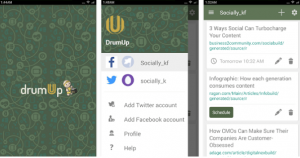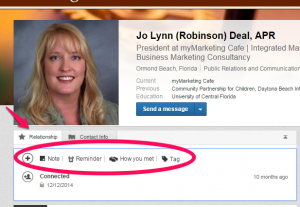As those of you who follow our blogs will know, we’re big advocates of recruitment and employer brand messaging. This is a no-brainer to me, as recruitment marketing sits neatly between our two main areas of expertise in employee engagement and content marketing.
As we get out and about talking to people about this, I’ve had three recurring and rather surprising – to me, anyway – questions come up time and time again. And, the truth is that these three questions are really just one question asked in three different ways, so forgive me if the answers, like the questions, are somewhat homogenous.
Nevertheless, I thought it might be useful to answer all three questions in one blog.
And so, without any more preamble, the first question is:
“But if we tell people what it’s really like here, won’t that put some of them off applying?”
Well, yes. Yes in italics. But why would you want those people – the ones who don’t like the real ‘you’ – working for you? You know they’re just going to limp through your expensive induction process and then start job-hunting…right?
I love this question, because I really think that one person’s dream job is another person’s nightmare, which means that what you have to offer will probably be exactly what someone is looking for. It’s a bit like online dating.
I heard a brilliant story recently about a company that values hard-nosed sales people who are motivated by targets and bonuses. A new manager decided to increase the number of applicants by changing their employer brand image and re-positioning themselves as a warm, friendly, creative environment that welcomes alternative ideas and points of view. There was only one problem: they didn’t really feel this way at all, and they started attracting the wrong people into their company.
And what happened next? As you would expect, the warm and friendly creative types were horrified and extremely de-motivated by the very structured, target-driven environment, and they all left. The silly thing is, there are plenty of people in the world who prefer a structured, target-driven environment. So…why not just attract those people instead?
Of course, if you know in your heart of hearts that there is an issue or aspect of your company culture that’s genuinely off-putting and currently being brushed under the carpet then it might be time to make some changes. But if it’s more a case that the job suits a particular kind of person, then put your effort into finding those people. Increasing the quantity of applicants shouldn’t really be your goal. You will be much better off with fewer, quality applicants who are a good match for your culture.
And so the moral of the story in recruitment marketing – as in dating and life in general – is just be yourself. You can’t please everyone all the time, but the more honest you are, the more likely you will be to find your matching “tribe”; the people who will thrive in the environment you have to offer – and who you are, thus, more likely to retain and enjoy a fruitful relationship with.
This leads us on neatly to the second frequently asked question, which is:
“Career blogging is all very well – but what sort of things will we talk about – how can we keep this going? Can we truly reveal what it’s really like to work here?”
The very nature of blogging is continuous, and career blogging is no different. Careers grow, develop and change over time just like anything else. I also think it’s worth mentioning that sometimes your work environment will seem un-imaginable to someone who’s never experienced it. A good career blog can provide a little window into your world.
The everyday things you take for granted may seem interesting and mysterious to those who’ve never been in your workplace. If you sit within a design team, or work with IT systems, or work in manufacturing – well, what does that actually look and feel like? This approach has obvious uses for students and graduates who have never worked anywhere, but it might provide value to those planning a career change as well. I have no idea what the average day in a jam factory (for instance) might be like, and jam factory workers are probably equally ignorant of life in a content agency. But what if I decide I’m fed up of marketing and I’d like to consider making the switch to a life of jam-making?
For example, a friend of a friend of mine worked – in his youth – as part of a ship’s crew. I asked him what made him decide to go for the job and he explained that the company had come to speak to his class at school and given a presentation about what life was like on board. “What were the students’ top questions?”, I asked. Unsurprisingly, they were things like: “Will I have Wi-Fi and be able to carry on tweeting or using Instagram while I’m at sea?”, “What are the meals like?”, “Is there satellite TV on board so I can watch the football?”, “What will my bedroom on board look like?”
The visit to the school satisfied people’s concerns about these day-to-day issues – and yes they do have Wi-Fi and football, in case you’re reading this and feeling twitchy at the possibility of a lack of these things – but a good career blog with photos and videos would have done the same. As I said in my answer to the first question, your work environment will definitely turn some people off. But others will be attracted to it, and those are the ones you want to focus on anyway.
To the people who do find your work interesting, you can’t say too much. I read somewhere that the average person now spends approximately two hours researching a company before applying for a job. What will come up when they research your company?
The more positive, truthful, relevant and up-to-date information you can provide about your company and the vacancies you have, the more likely you are to be found by relevant candidates for your organisation. And that’s not all. This activity can even have an impact on your marketing activities, as the daily lives of your employees are also part of your story and will make you seem more human and appealing to your customers too.
And finally – the last common question is:
“I’m afraid to ask my employees for help with distributing messages about our company. Is there any way to control what they say?”
Erm, no. There really isn’t. When I hear this question, I put my employee engagement hat on, because this lack of confidence in what employees might say hints that either the team lacks the right skills and experience, or that there’s a mismatch between what employees in this environment expected from their roles and the reality of the situation. As I mentioned earlier, that could be because the role or environment requires a certain type of personality or mind set, in which case you should bear this in mind in your future recruitment. It could also be that the company has been through some changes and is no longer what some team members signed up to – a fairly common problem as companies grow or shrink in reaction to changing market conditions.
My short answer to this is – don’t say you’re a great place to work. Be a great place to work – for a certain kind of person. And if you are delivering a great work environment for your particular type of ‘employee tribe’, they should be willing and even eager to share with the world all the great work you are doing.
I’d like to emphasise here that I’m not talking just about recruitment messages but all company messages. This is because I think any message that your company is sharing will have some bearing on your image with potential recruits. What is more appealing than a company whose employees are clearly very engaged with and proud of their companies’ activities?
There are three main steps to getting your employees on board with sharing your messages. They are:
- Develop a company culture and employer brand that feels appropriate to the product or service you provide and then be proud of it. Realise that you can’t please everyone, so focus on those who are a good match for your culture. Be unapologetic to those who aren’t – there is somewhere perfect for them out there; they just have to go out and find it.
- Be clear about what your oganisation values and expects from employees.
- Once you’ve identified and attracted your ideal employee ‘tribe’, care about and respect them. Communicate with them regularly and clearly, and listen and respond to their feedback and ideas.
If you are doing all of these things, you should feel comfortable asking your employees to help distribute messages and content, and they should be enthusiastic about doing so. Because anything that benefits you obviously should benefit them.
It seems that different industries are more comfortable with this than others, which is interesting. In some research we recently did on this subject, we found that often technology and engineering companies were more comfortable asking their staff to share company messages than other industries. This is interesting, but perhaps not surprising: these types of companies are often very good at the three steps above, and their employees are often very happy to identify with their employer.
So, if you aren’t comfortable asking your employees to share your messages – or you’ve asked them to do so and received a lackluster response – ask yourself whether this is because you need to do more training to ensure they know how to get involved, or because they’re not happy and on board with your company culture and goals. There’s nothing worse than that “mismatched” feeling of being in the wrong tribe, so if you think this is happening in some parts of your team, it’s best to get to the bottom of it as soon as you can.
Either way, you can fix it by getting to the root of the issue and taking decisive and appropriate action.
Those are the long answers to the three questions. The short answer would have been: always be honest, firm, clear and proud of what you have to offer. Good things will come of it.
Business & Finance Articles on Business 2 Community
(26)
Report Post





